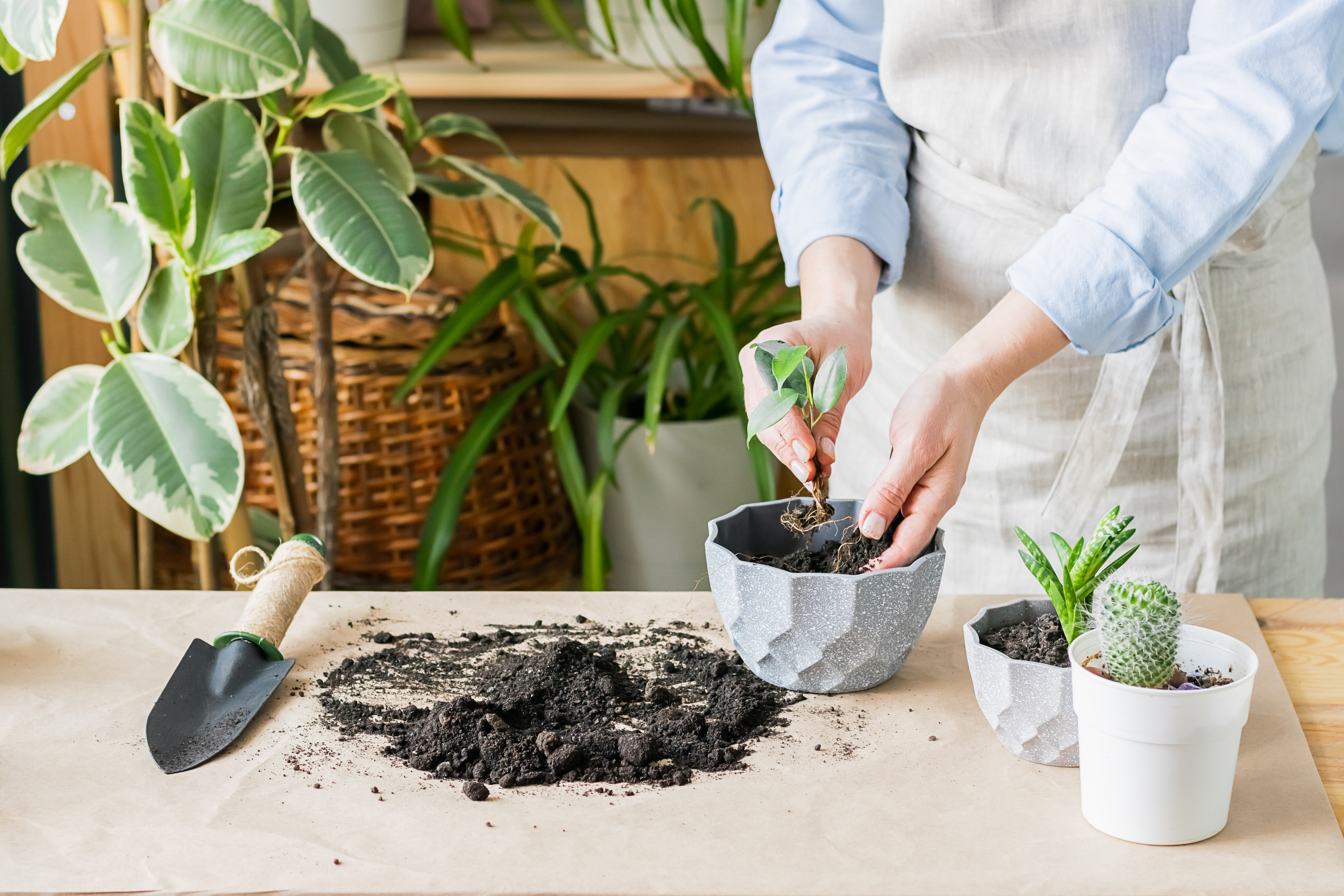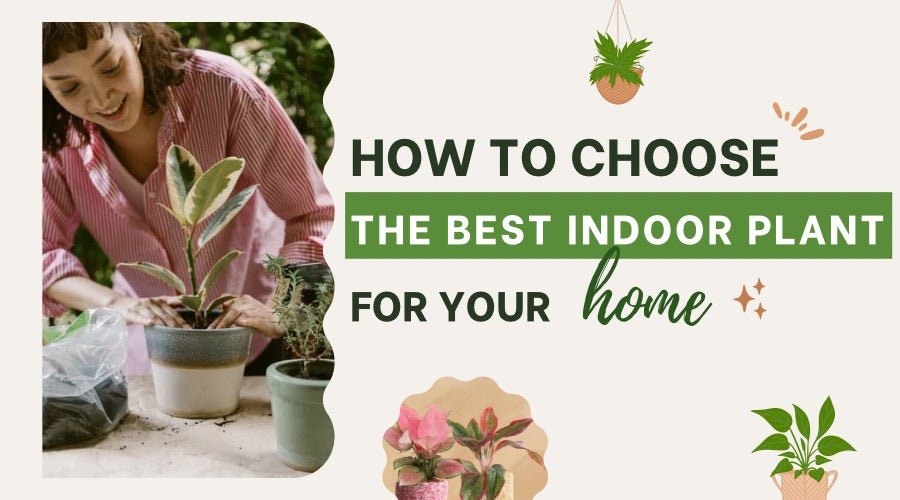Choosing the right indoor flower plants can be simple. Start by considering your space and light conditions.
Indoor flower plants bring life and color to any room. They purify the air and boost your mood. Selecting the right ones can be tricky, though. You need to consider factors like light, space, and maintenance. Some plants thrive in low light, while others need more sun.
Think about your lifestyle too. Do you want low-maintenance plants, or are you ready for a little more work? This guide will help you make the best choice for your home. You’ll learn what to look for and how to keep your plants healthy. Let’s dive in and explore the best indoor flower plants for your space.
Benefits Of Indoor Flower Plants
Indoor flower plants offer numerous benefits that enhance both health and home. These plants not only beautify your space but also improve your well-being. Let’s explore some of the key benefits.
Improving Air Quality
Indoor flower plants help purify the air. They absorb toxins and release oxygen. NASA’s study on air-purifying plants highlights their effectiveness. Certain plants can remove harmful chemicals. These include benzene, formaldehyde, and trichloroethylene. Cleaner air means better health. It reduces the risk of respiratory issues. It also helps in improving sleep quality.
Enhancing Aesthetic Appeal
Indoor flower plants add beauty to any space. They bring color and life indoors. A well-placed plant can change a room’s look. It creates a more inviting atmosphere. Flowering plants add a touch of nature. They can also reflect your personal style. Different plants suit different decor styles. Some prefer minimalistic designs. Others like vibrant and lush displays. Plants make any space feel more cozy and welcoming.
Assessing Your Space
Choosing the right indoor flower plants involves many factors. One of the most crucial steps is assessing your space. Understanding your home’s environment helps you pick the perfect plants. Consider lighting, room size, and layout to ensure your plants thrive.
Lighting Conditions
Light is essential for plant health. Different plants need different amounts of light. Assessing your space’s lighting conditions helps you choose plants that will flourish. Here are some tips:
- Identify which direction your windows face.
- Check if your room gets direct sunlight or is mostly shaded.
- Use a light meter to measure light levels.
For example, succulents and cacti love direct sunlight. Ferns and peace lilies prefer low light. Knowing your lighting conditions helps you select plants that will thrive in your home.
Room Size And Layout
Room size and layout also influence plant choice. Large rooms with high ceilings can accommodate bigger plants. Small spaces benefit from smaller plants or hanging varieties. Here are some key points:
- Measure the available space for your plants.
- Consider the layout of your furniture and decor.
- Think about traffic flow and how plants will fit into your space.
Using a mix of floor plants, table plants, and hanging plants can maximize your space. For large rooms, try a fiddle leaf fig or a rubber plant. In smaller rooms, opt for pothos or spider plants. Choose plants that enhance your room’s design and fit well within the space.
Determining Plant Care Levels
Choosing the right indoor flower plants requires understanding their care needs. Different plants have different requirements. Some need more water. Others need less. Some thrive with little attention. Others need regular upkeep. Understanding these differences helps you make the best choice for your home.
Watering Needs
Every plant has unique watering needs. Some need frequent watering. Others prefer dry soil. Overwatering can harm plants. So, it’s crucial to know your plant’s water needs. Here are some examples:
| Plant | Watering Needs |
|---|---|
| Succulents | Once every two weeks |
| Ferns | Twice a week |
| Peace Lily | Once a week |
Maintenance Requirements
Maintenance varies between plants. Some need more care. Others are low-maintenance. Knowing this helps you choose wisely. Here are some factors to consider:
- Pruning: Some plants need regular pruning.
- Repotting: Some require frequent repotting.
- Fertilizing: Some need regular feeding.
Here are examples of maintenance levels:
| Plant | Maintenance Level |
|---|---|
| Spider Plant | Low |
| Orchids | High |
| ZZ Plant | Low |
Choosing the right plant involves matching its care needs with your lifestyle. This ensures your plants stay healthy and thrive in your home.
Choosing The Right Plant Types
Choosing the right indoor flower plants can be a fun and rewarding process. The key is to consider the light conditions in your home. Some plants thrive in low light, while others need bright light to grow. Understanding these needs will help you select the perfect plants for your indoor space.
Low-light Plants
Low-light plants are perfect for rooms with little natural light. These plants can thrive even in dim corners.
- Snake Plant: This plant is tough and can survive with minimal light.
- ZZ Plant: Known for its waxy leaves, it needs very little light.
- Pothos: This plant grows quickly and can tolerate low-light conditions.
Low-light plants are ideal for offices or rooms with small windows. They add greenery without needing much sunlight.
Bright-light Plants
Bright-light plants need plenty of sunlight. Place them near windows where they can soak up the sun.
- Succulents: These plants love direct sunlight and dry soil.
- Fiddle Leaf Fig: This plant needs lots of bright, indirect light to thrive.
- Bird of Paradise: Known for its beautiful flowers, it requires bright light.
Bright-light plants are great for sunrooms or south-facing windows. They grow best with a lot of natural light.
Here’s a quick comparison of low-light and bright-light plants:
| Low-Light Plants | Bright-Light Plants |
|---|---|
| Snake Plant | Succulents |
| ZZ Plant | Fiddle Leaf Fig |
| Pothos | Bird of Paradise |
Choosing the right plant type ensures your indoor garden flourishes. Whether you have low light or bright light, there’s a perfect plant for your space.
Considering Plant Size
Choosing the right indoor flower plants can transform your home. One key factor to consider is the size of the plant. The size of the plant impacts its placement and care needs. It also affects the overall look of your space.
Small Plants For Shelves
Small plants are perfect for adding a touch of green to shelves, desks, and windowsills. They require less space and are easy to move around. Here are some popular small indoor plants:
- Succulents: These are low-maintenance and come in many shapes.
- Miniature Pothos: This plant has beautiful trailing vines.
- Air Plants: No soil needed; they can thrive on minimal care.
Large Plants For Corners
Large plants can make a bold statement in any room. They are perfect for corners, filling up empty spaces, and providing a focal point. Consider these popular large indoor plants:
- Monstera Deliciosa: Known for its large, split leaves.
- Fiddle Leaf Fig: Offers tall, dramatic foliage.
- Rubber Plant: Features thick, glossy leaves.
Make sure you have enough space and light for these larger plants. They need room to grow and can become a beautiful part of your home decor.

Credit: www.yahoo.com
Selecting Plants For Air Quality
Choosing indoor plants not only beautifies your home but also improves air quality. Many plants can filter toxins and release oxygen, creating a healthier living space. This section will guide you in selecting plants known for their air-purifying qualities.
Top Air-purifying Plants
Some plants are excellent at purifying the air in your home. Here are a few top choices:
Spider Plant: Easy to grow and great for beginners. It removes formaldehyde and xylene.
Peace Lily: This plant is known for its ability to remove ammonia, benzene, and formaldehyde.
Snake Plant: Also called Mother-in-Law’s Tongue, it filters out formaldehyde and benzene.
Boston Fern: Known for its ability to remove pollutants like formaldehyde and xylene.
Aloe Vera: Besides its healing properties, it removes formaldehyde from the air.
Plants To Avoid
While some plants are great for air quality, others can be less beneficial or even harmful:
Oleander: Beautiful but toxic. Keep away from pets and children.
English Ivy: It can cause skin irritation and isn’t pet-friendly.
Peace Lily: While good for air quality, it can be toxic if ingested.
Pothos: Effective in purifying air but toxic to pets if eaten.
Philodendron: Commonly used, but can cause allergic reactions in some people.
Matching Plants With Interior Decor
Choosing the perfect indoor flower plants can transform your living space. Matching plants with your interior decor is essential to create a cohesive and stylish look. This section will guide you on how to achieve color coordination and match the style and theme of your home.
Color Coordination
Color coordination is key to harmonizing your plants with your decor. Here are some tips:
- Neutral tones: White, cream, and green plants fit well in minimalist spaces.
- Bold colors: Red, pink, and purple flowers can add a vibrant touch.
- Complementary colors: Match your plants with existing decor for a cohesive look.
| Plant Color | Best Matched With |
|---|---|
| White | Neutral or pastel decor |
| Red | Earth tones or modern decor |
| Pink | Feminine or vintage decor |
Style And Theme
Matching your plants with the style and theme of your home adds to the overall aesthetic. Consider these ideas:
- Modern spaces: Opt for sleek plants like succulents or snake plants.
- Bohemian vibes: Choose hanging plants like ivy or spider plants.
- Vintage decor: Flowering plants like orchids or peace lilies work well.
Remember, the right plants can enhance your interior design. Pay attention to details and choose plants that complement your space.

Credit: potsplantersandmore.com
Tips For Plant Shopping
Choosing indoor flower plants can be fun and rewarding. The right plants can brighten your home and improve air quality. But shopping for plants can be tricky. Here are some tips to help you make the best choice.
Where To Buy
Finding the right place to buy plants is crucial. Good options include local nurseries, garden centers, and plant shops. These places often have healthy plants and knowledgeable staff. You can also buy plants online. Ensure the seller has good reviews and a solid return policy.
| Place | Pros | Cons |
|---|---|---|
| Local Nurseries | Healthy plants, expert advice | Limited variety |
| Garden Centers | Wide variety, seasonal sales | Can be crowded |
| Online Stores | Convenient, larger selection | Shipping stress on plants |
What To Look For
When shopping for indoor flower plants, inspect the leaves and stems. Healthy plants have vibrant, green leaves without spots or holes. The stems should be firm, not mushy.
Check the soil. It should be moist, not dry or waterlogged. Look for signs of pests like webs or tiny insects on the plant.
Consider the plant’s light requirements. Some plants need bright light, while others do well in low light. Choose plants that match your home’s light conditions.
- Check for pests: Look under leaves and around stems.
- Inspect the soil: It should be neither too dry nor too wet.
- Light requirements: Match the plant to your home’s light levels.
By following these tips, you can find the perfect indoor flower plants to enhance your space.

Credit: www.amazon.com
Conclusion
Choosing the right indoor flower plants can brighten your home and life. Consider light, space, and care needs before buying. Start with low-maintenance plants if you’re new to gardening. Always check the plant’s water and sunlight requirements. Happy plants will thrive and bring joy.
Remember, each plant adds beauty and improves air quality. Enjoy your indoor garden journey!





